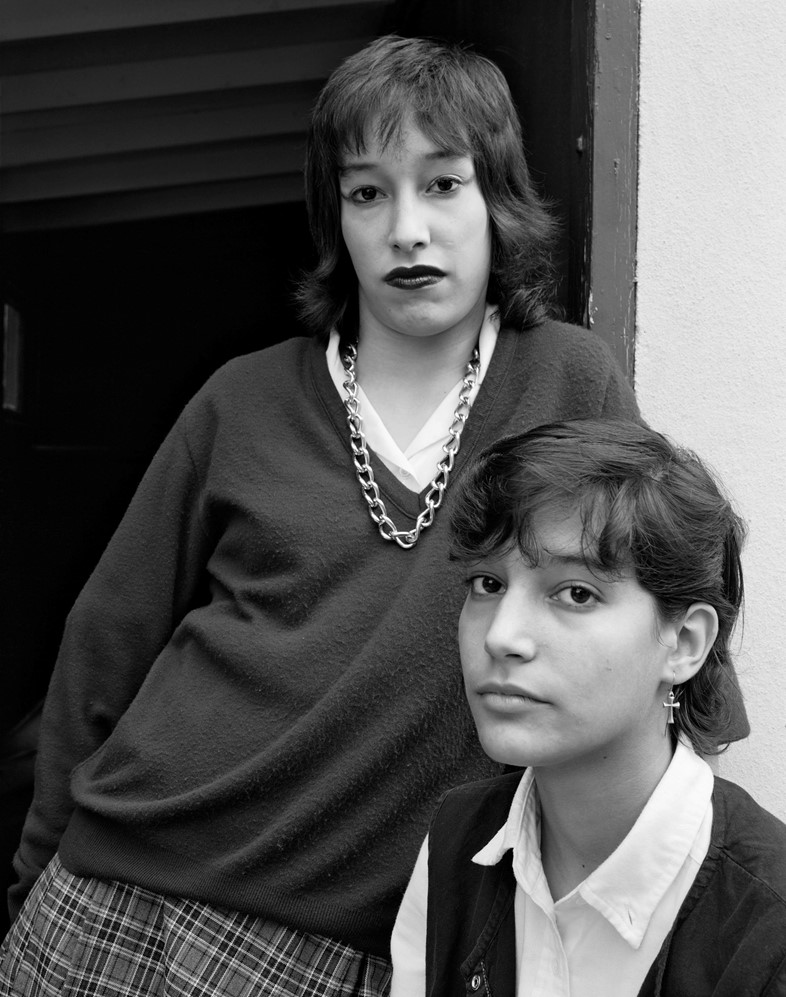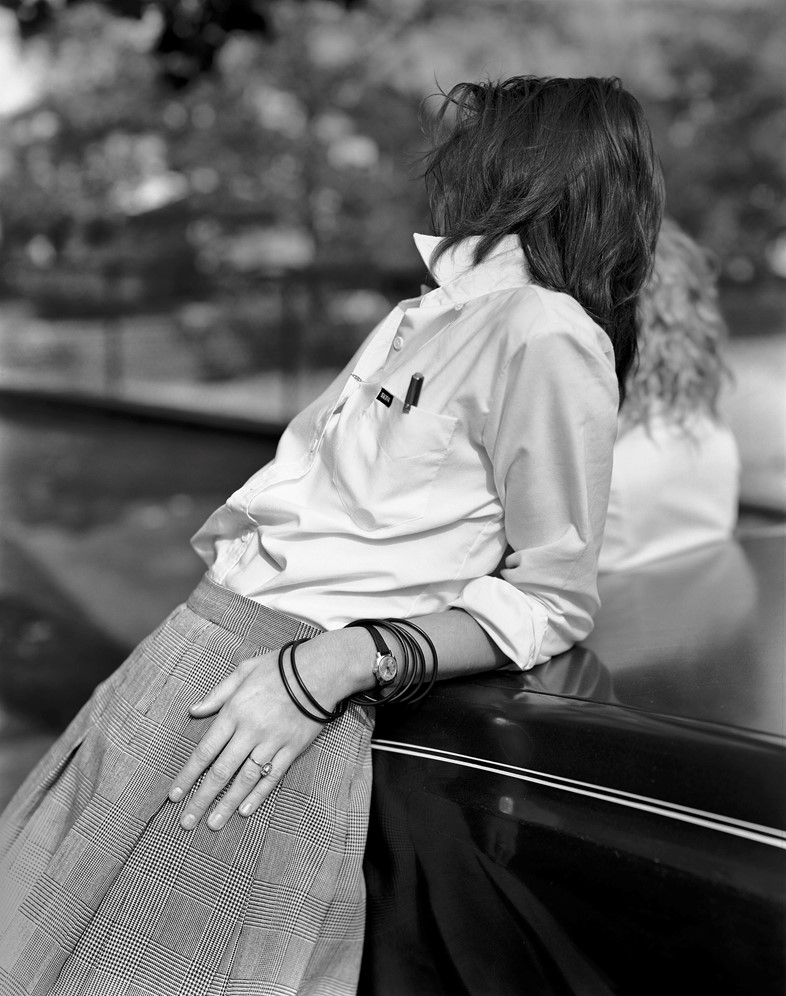Andrea Modica, Catholic Girl16 Images
In the spring of 1984, during a freak storm that dropped a thick layer of snow on New York, Andrea Modica headed to Brooklyn to see her old art teacher, the abstract painter Len Bellinger, at the time still on staff at Modica’s alma mater: a largely Italian-American Catholic school for girls in Bay Ridge. “I was exactly seven years out of high school, in the middle of graduate school,” recalls the photographer, speaking to Dazed from Philadelphia. “I didn’t go with a plan, but something tipped; I returned to all those emotions of being in high school. In retrospect, seven years is a tiny amount of time and I was still so close to it.” Firmly grasping hold of these feelings – her own and those she recognised in the girls around her – Modica began making work on the school grounds.
Four decades on, the pictures have been assembled into a monograph, Catholic Girl, published by L’Artiere Edizioni. Mostly photographed outdoors and frequently in pairs (“at that age the best friend is usually hovering around”), both in Brooklyn and at two further schools in New Haven where Modica was attending Yale, there is an overriding toughness to the images, coupled with a particular vulnerability that speaks to the girls’ age. Each here becomes a kind of style icon, facets of her character underscored by her sartorial choices – the coat she chooses to drape over the co-ordinated white blouse and tartan skirt, or the sort of jewellery she selects as armour. As a group, there is an unwavering and wonderfully rich approach to appearance which feels, at least from a distance of decades, rooted in something bigger.

One pair in particular proved especially striking to Modica: two sisters, the younger standing, her lips painted black as liner stretches from the corners of her eyes, a thick chain circling her neck. “She’s still wearing the uniform, following the rules, but she’s got those things going on – that hadn’t changed; we had always figured out ways to not get into too much trouble, but still be enough of a pain to the nuns,” shares Modica. By contrast, her elder sister sits up front, a crucifix dangling from her ear and her face seemingly free of product. “I love that the younger sister is the rebel, that the bigger sister’s not wearing much make-up, and yet they’re sisters, they’re together. It’s beautiful.”
“That picture moved me,” she continues, “in that way that there’s this clashing. An abundance of different types of music that shows itself in the politics, certainly in my time, and also the fashion – the book is a fashion exposé, without ever meaning to be.” Though she didn’t recognise it then, in making the pictures Modica was producing an archive of the wider cultural themes of the time. “So much of it had to do with music – and it really was about this clashing,” she notes. “My school was heavily into disco – ‘74 to ’78, Brooklyn – and then there was another faction much more interested in classic rock. So in 1984 I was noticing how the styles had changed, not only in what people wore, but how they looked.”

Mirroring the subsequent shift in subcultures – largely eroded by streaming and the financial ease for fans interested in dipping into multiple genres – that the series materialised pre-camera phones and digital cameras distinctly informed the way the girls engaged with Modica she says, and similarly responded to her camera (a heavy 8×10 piece she still shoots with today). “Imagine that they were not photographing themselves or each other, as high school kids do now. So being photographed, I think, they were just excited,” she says. “Also, they had to stay still [because of the type of camera] so by the time the picture’s made they’re not performing, it’s really a collaboration of what I’m seeing them do. It’s so different from the performative tendency of taking a picture with the telephone, knowing it’s going to be shared.”
Reflecting on the project today, nostalgia and gratitude are the overwhelming sentiments she offers, “that I actually was there when that happened, and that that happened. I was working quite intuitively, and I saw and learned what was happening right in front of me. I couldn’t have invented something like that.” In tandem with this is a contemplation of her own teen years, which Modica describes in the book’s single essay as “a time of intense joy and unfathomable grief”. “Life can’t and shouldn’t go on like that forever,” she adds over Zoom. “I hadn’t quite processed it [in 1984]. But in later years, there’s this certain nostalgia. Maybe we forget about the pain.”
Catholic Girl is published by L’Artiere Edizioni and avilable to pre-order here now.





